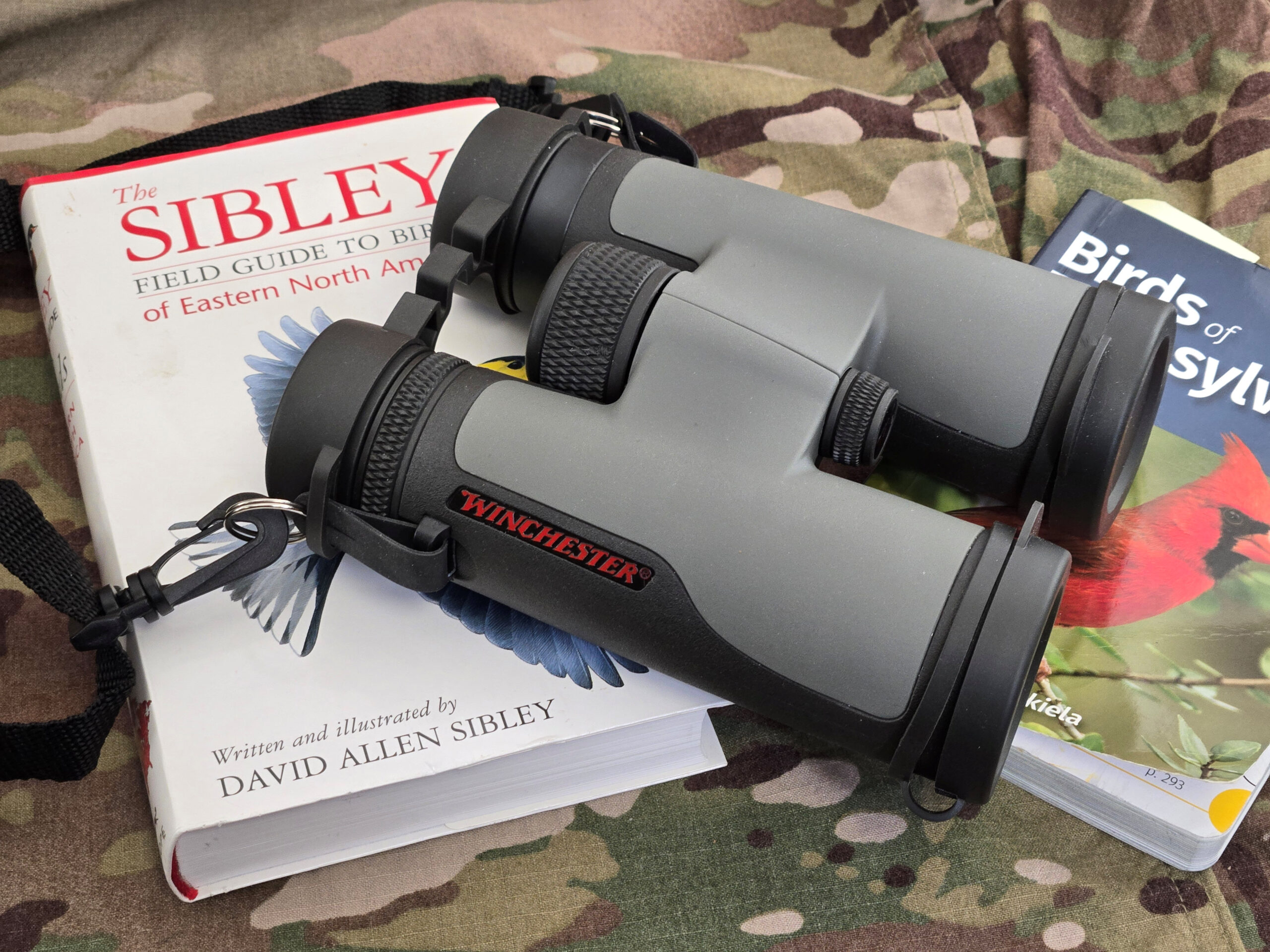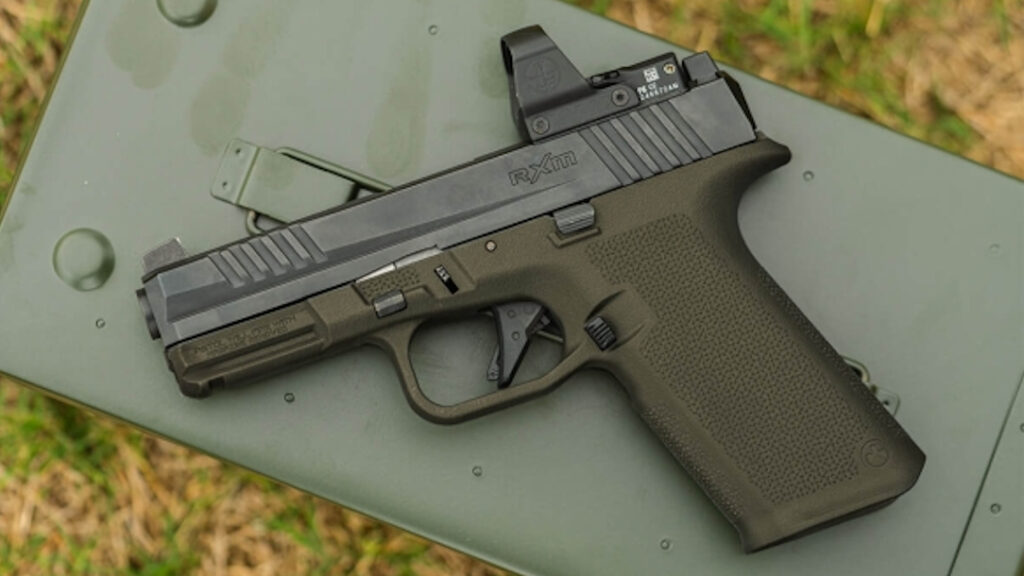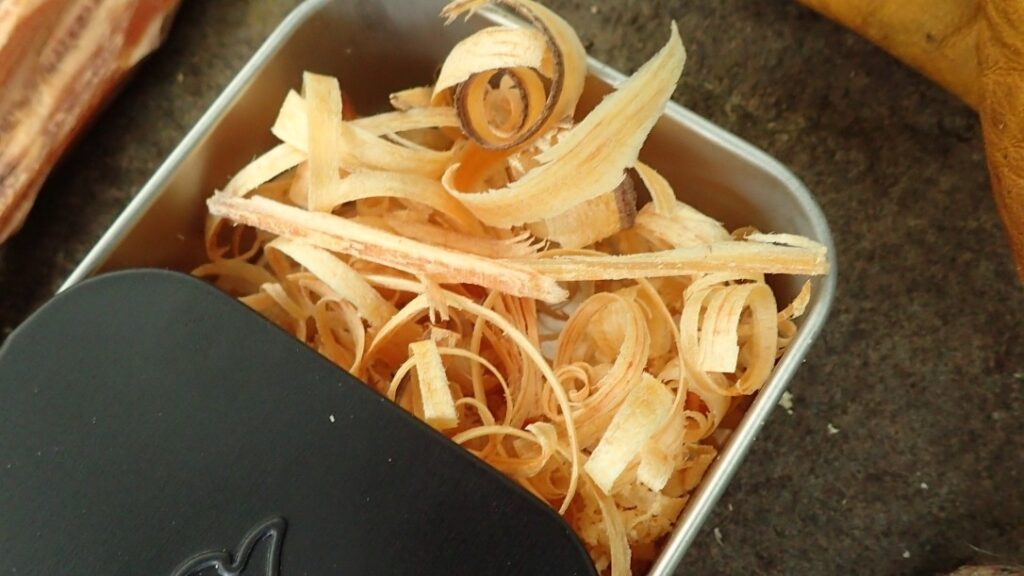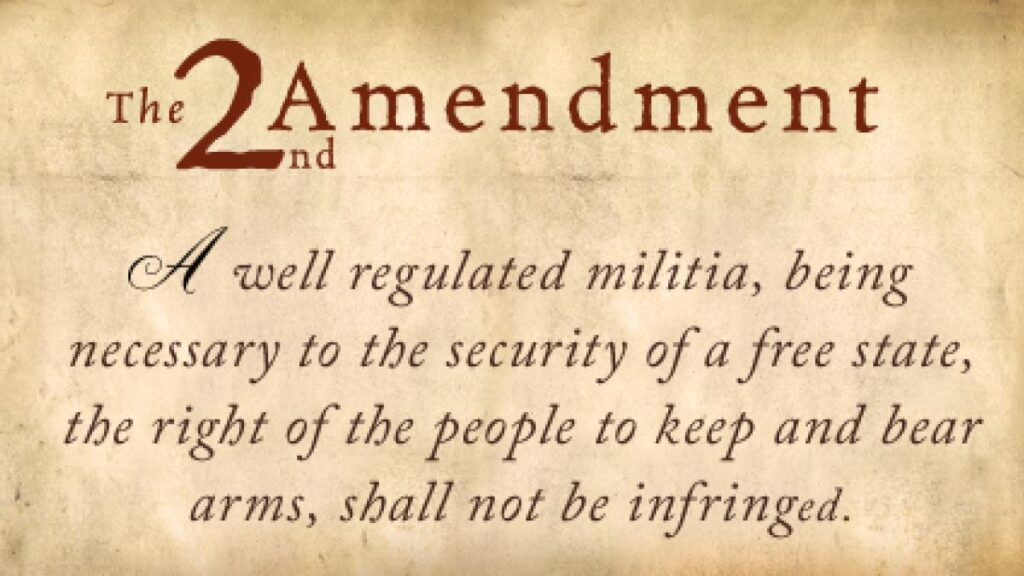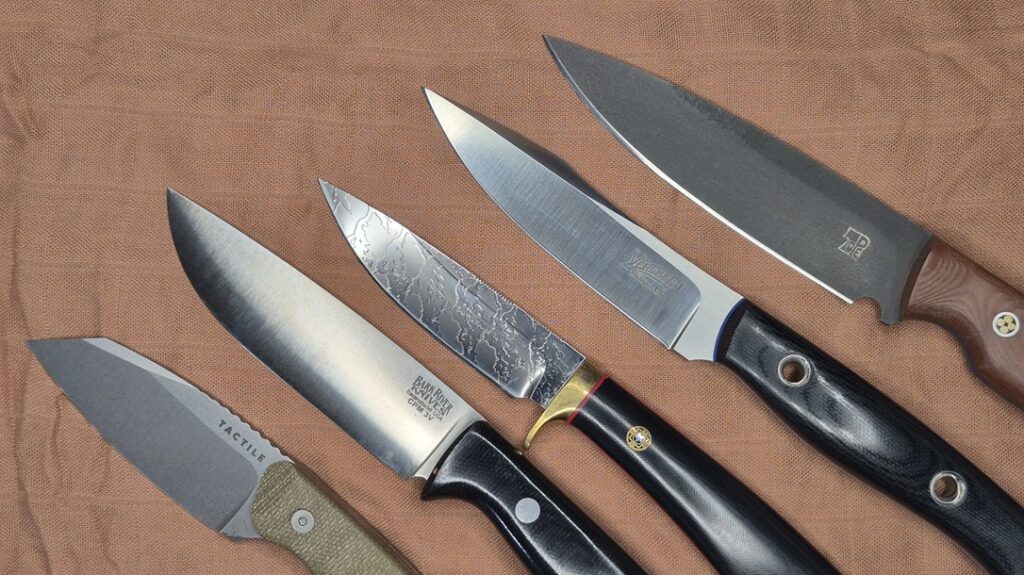Winchester launched a new optics line this past fall under the Winchester Supreme Optics name. It consists of binoculars, rangefinders, and rifle scopes in a variety of flavors. I had a chance to check out a pair of binoculars from the lineup and have been using them for the past few months.
The Winchester Supreme 8×42 Binocular
I picked up a pair of the Winchester Supreme 8x42mm binoculars for evaluation. This is the lowest power option offered in the new line. They also have 10×42, 10×50, and 12×50 models available. I wanted something a little more compact for field use, though.
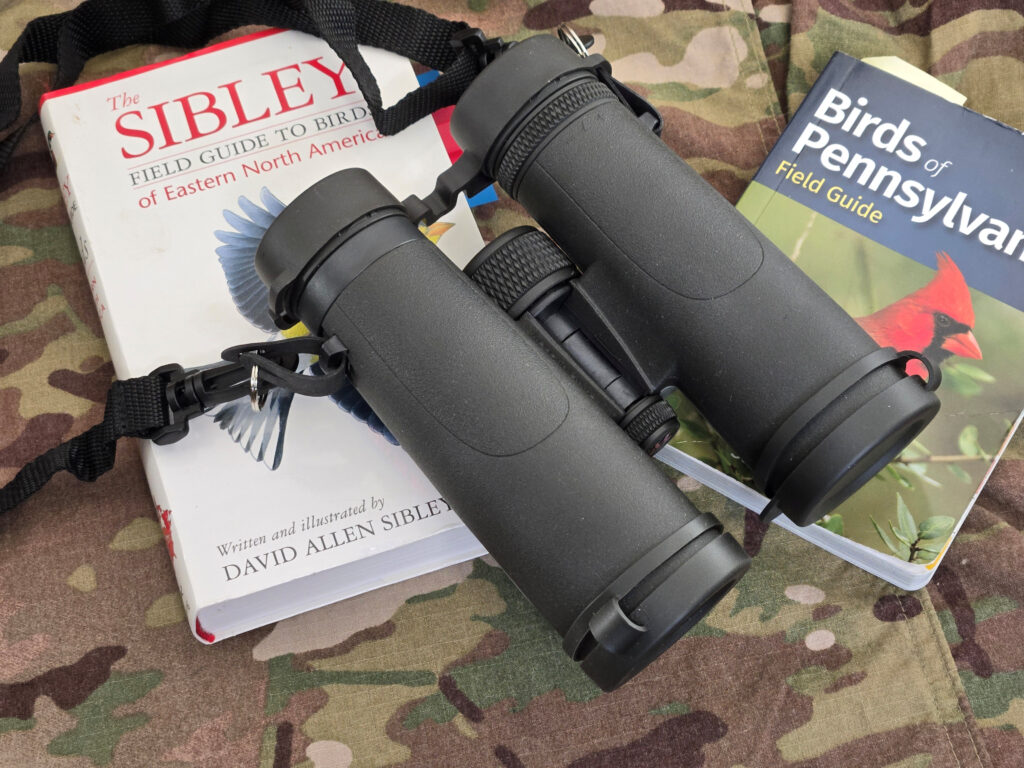
Advertisement — Continue Reading Below
The Supreme binoculars are built on a PPS thermoplastic chassis that’s covered in a tactile surface. They’re light and durable. The tactile skin gives a good grip on the binoculars in cold or wet weather. It is further enhanced with a Nitrile NBR/PVC rubber armoring. It’s resistant to heat and oil and adds shock absorption to the chassis. There are two twist-up eyecups for use with or without glasses and a center-mounted knurled focus adjustment knob.
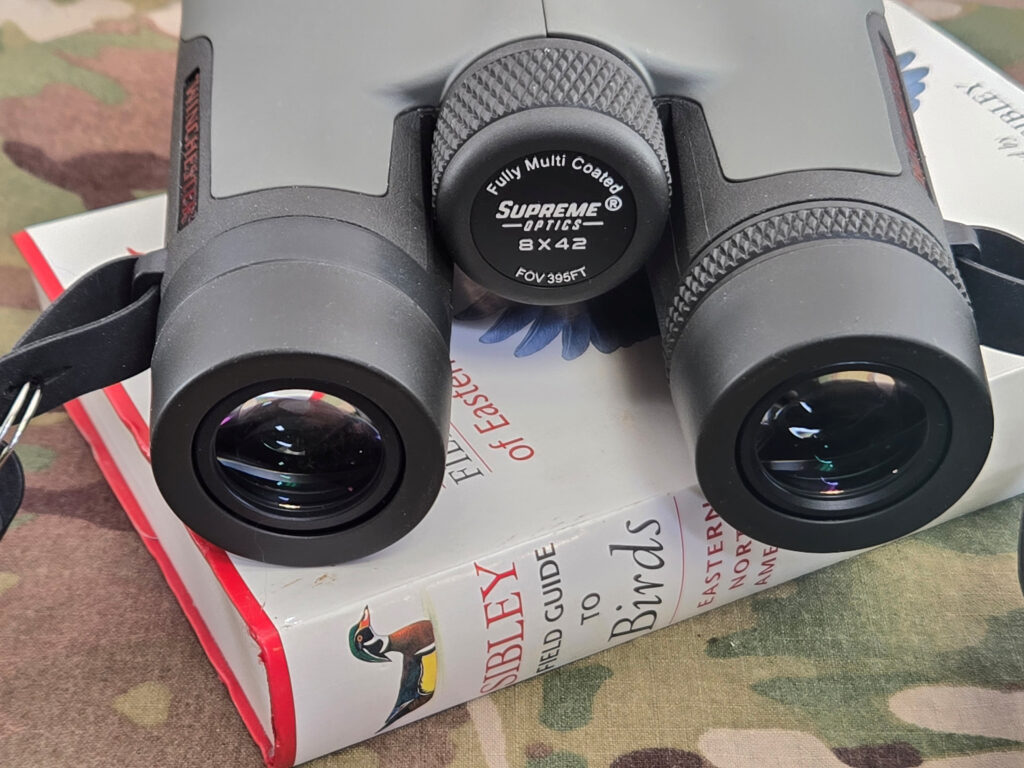
As noted, I picked an 8x42mm model. It uses a BAK4 prism with high-density glass that is supposed to give you a brighter, crisper edge-to-edge image. They also help in low-light conditions. The lenses are multi-coated for increased light transmission and reduced glare. There is a silver-coated phase-correcting prism incorporated in the design that again helps with light transmission and gives brighter images and increased contrast.
Advertisement — Continue Reading Below
The optic tubes are sealed against fog and water and are Nitrogen-filled. They’re rated as weatherproof and IPX7 waterproof and are submersible to 1 meter for 30 minutes, so they’ll handle a dunk in the stream or pond in the field.
The 8x42s come with rubber lens covers, a padded case with a chest harness, a neck strap, as well as a cleaning cloth, and a manual. MSRP on the Supreme 8x42s is $206.99.
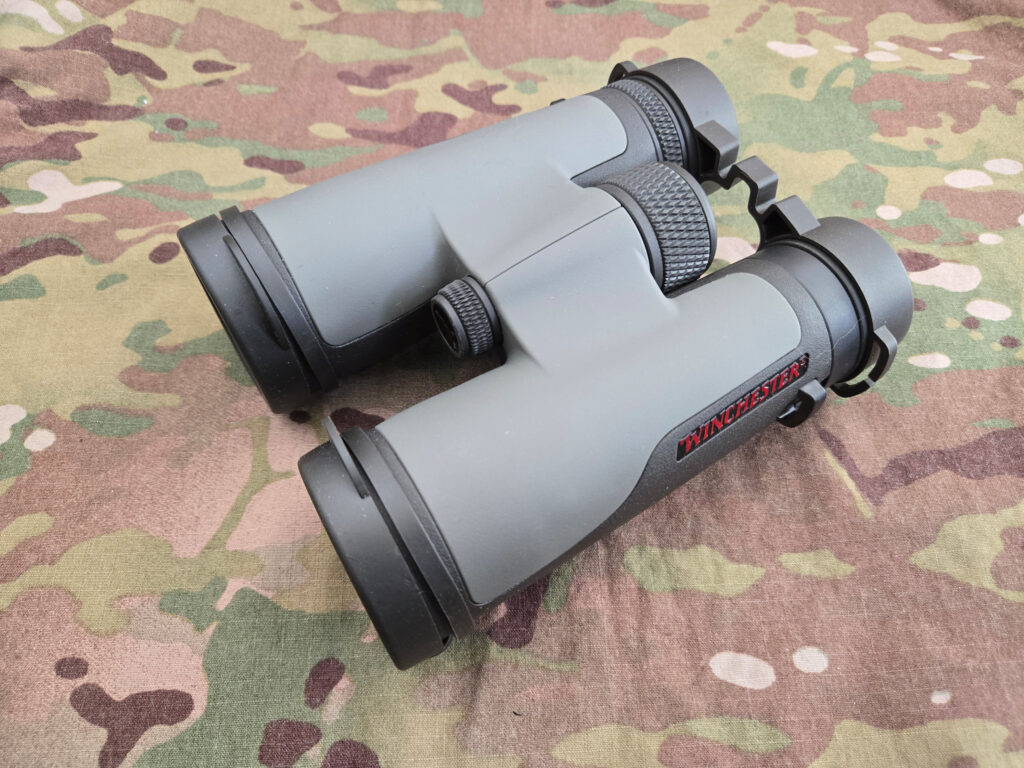
Advertisement — Continue Reading Below
Seeing Is Believing
Okay, I’ll be honest, a lot of that technical information is over my head. It sounds good, and I’m sure it is. But it’s hard for me to quantify what it really means just by reading it. So I just started using my binoculars to see what they’d do. My first impression was very positive. They have a solid feel, and the image quality appears to be very good. Nice and crisp, with a good field of view.
My primary uses were for birding, and to supplement my spotting scope at the range. My wife and I have always put out bird and squirrel feeders. Like a lot of folks, we became bird nerds during Covid when we couldn’t do much else. We sat on our deck a lot, had drinks, and watched birds. We picked up a couple of bird books and started paying attention to what birds actually came to our feeders.
Once you start down that rabbit hole, you realize that being able to see details up close helps a lot with identifying birds. So, I got in the habit of keeping binoculars handy. My other binos are a set of Leupolds and a compact set of Nocs. So that’s my basis for comparison with the Winchester Supreme pair.
Advertisement — Continue Reading Below
8x works pretty well for what I was doing. It’s enough power to see good detail but low enough power that I still had a good field of view. Especially coupled with the 42mm aperture. I could pick up birds or other animals quickly. The focus knob was easy to use, and I never had an issue getting a clear image. My wife wears glasses, and she was able to use the Supreme binos easily, too, thanks to the twist-up eyecups.
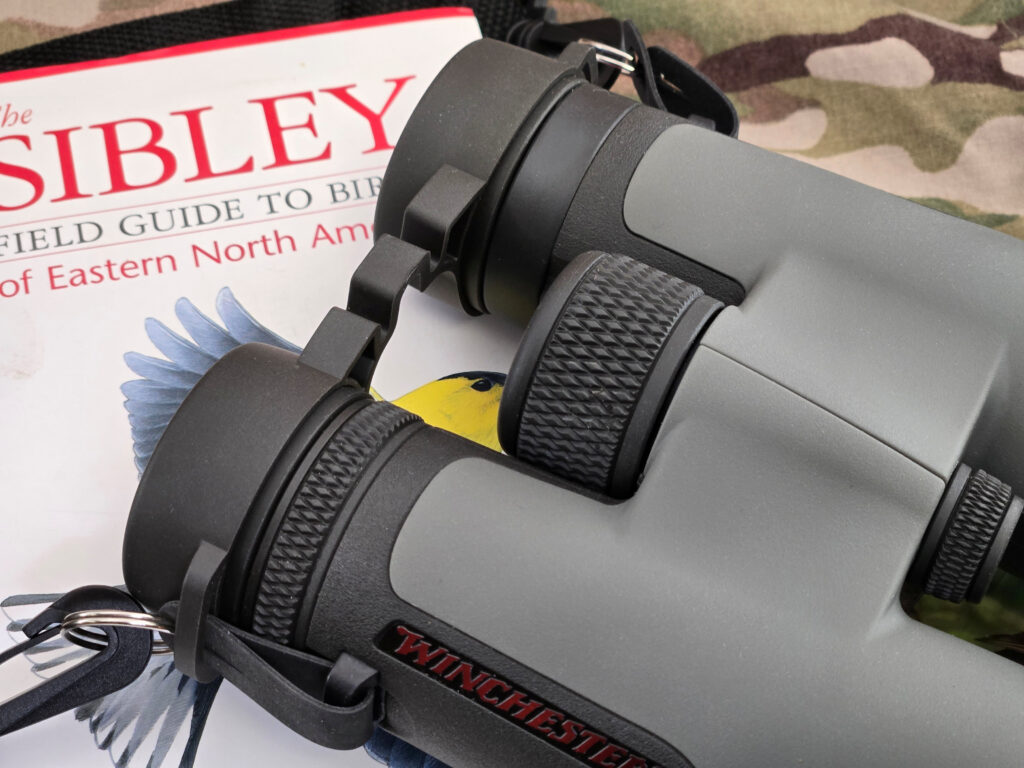
Light Gathering
I appreciated the light-gathering properties of the binoculars. A lot of the feeding time of the birds is either early morning, or right around dusk. As winter encroached and the daylight hours got shorter (I live in Pittsburgh, and we get less sun than Seattle), I found that I was still able to make out good detail, even at those times of waning or waxing light.
Advertisement — Continue Reading Below
Winchester Supreme Binoculars on the Range
On the range, I used the binoculars on a mix of sunny summer days, some drizzling rainy days, and gloomy, cold winter days. I had no issues with fogging, even on the cold and wet days.
I got to inadvertently test the drop rating, too. At one point I knocked the binoculars off the loading table onto the concrete on one range trip. Despite landing on the edge of the front right optics tube, there was no visible damage. I had the lens cover on, and between the recessed lens and rubber-enhanced coating, everything survived with no issues.
8x was enough power that I could use it to check targets for 25-yard sight-ins. It was fine for .30 caliber and up. .22 holes were kind of hard to see. Although that could be my 50-something-year-old eyes, too.
Advertisement — Continue Reading Below
Optic clarity and field of view compared favorably to my set of Leupold binoculars. They’re a more expensive model than the Winchester Supreme but not one of Leupolds really high-end models. They had better light gathering and field of view than the Noc’s. But they also have a 42mm lens vs the 25mm of the Nocs.
The Winchester 8x42s sit on price right in between my other binoculars. So the fact that they compare favorably with the higher-end pair was pretty good, I thought.
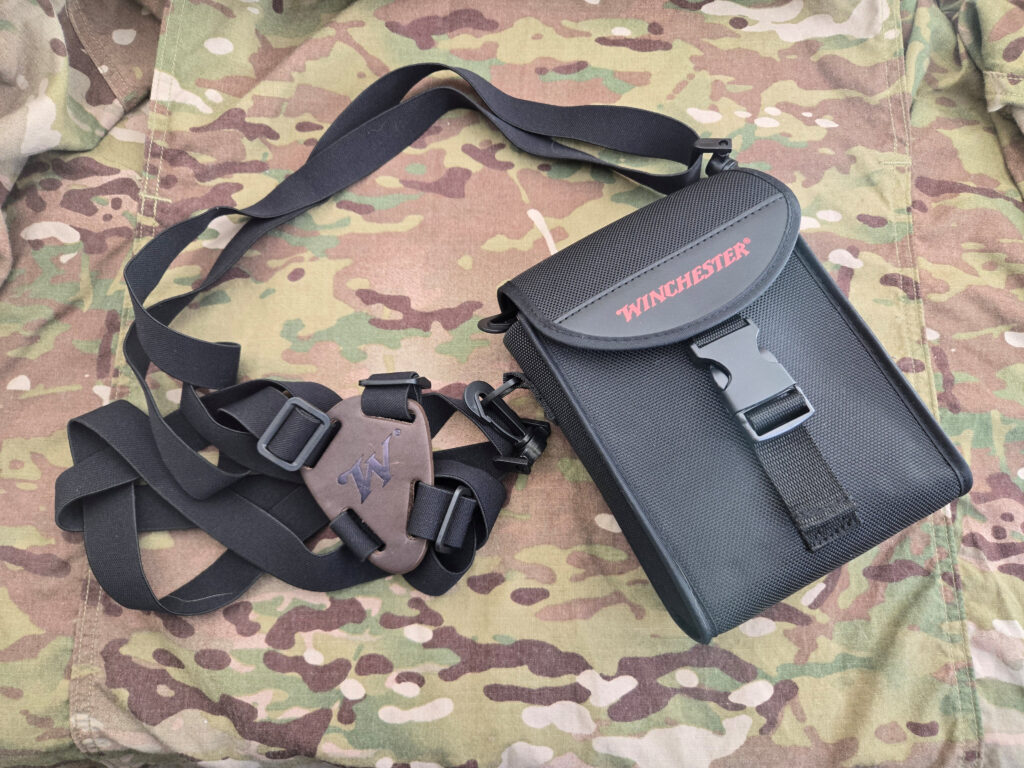
Advertisement — Continue Reading Below
Carrying the Winchester Supreme
The case and neck strap that the Winchester Supreme binoculars come with is adequate. It works, but is nothing exciting. Honestly, I don’t expect a lot from a binocular case until you start getting into a few hundred bucks or more. The harness looks pretty good, but I haven’t really used a binocular case harness before to have a strong opinion. It’s comfortable to wear, though, and keeps the binoculars handy in the field.
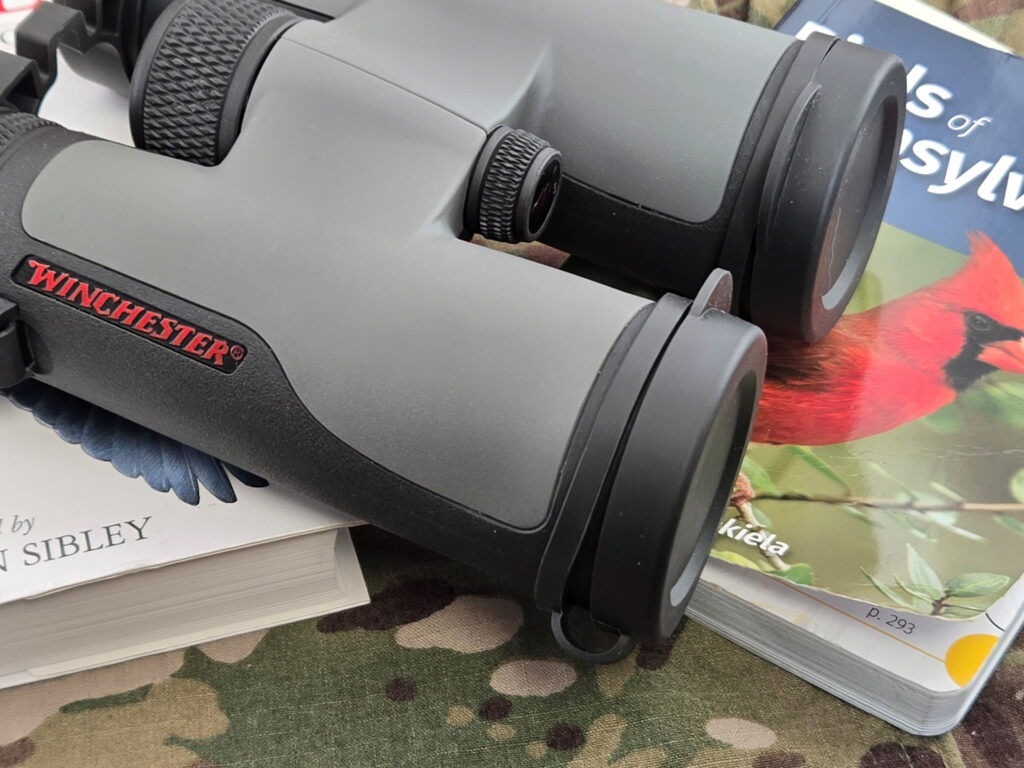
Wrap Up
Performance on the 8×42 was quite good and comparable to my more expensive binoculars at about two-thirds the price. They had a crisp image, easy adjustment and were very good in lower light. The apparent durability and weather resistance is a plus, as well. I have an Alaska trip coming up later this year, and the Winchester Supreme binoculars have made the cut on my gear list to take with me.
Advertisement — Continue Reading Below
For more information on these and the rest of the Winchester Supreme Optics line, check out their website at Winchesteroptics.com.
